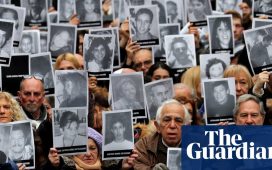Hundreds of people gathered at St. Patrick’s Cathedral to celebrate an important moment for Catholics in New York. Cardinal Timothy Dolan delivered a homily on the life of one of their own, Dorothy Day, a native New Yorker and anarchist writer and activist who died in 1980.
The sermon last month represented the end of a 20-year inquiry by the Archdiocese of New York on whether Ms. Day should receive sainthood, a question the Vatican will ultimately decide.
Many of her admirers, including her granddaughter, had hoped Cardinal Dolan would talk about her commitment to social justice for the poor and the oppressed and her opposition to war and capitalism. In 1933, Ms. Day — often described as both politically radical and theologically orthodox — founded the Catholic Worker Movement, which remains active around the world in the form of Catholic Worker houses, where members live for free and provide services to the poor.
But in his sermon, Cardinal Dolan described Ms. Day’s “far from sinless life.”
“I am not going to go into her story,” he told the audience. The important thing for them to know was that when she was 25 she became “kind of frustrated with her life.”
“She had done quite a bit of experimenting and drifting, and she’d be the first to admit her promiscuity,” the cardinal continued. “But she kept detecting an emptiness, a searching in her life. And after a lot of prayer and study, that led in 1925 to her baptism as a Catholic.”
His remarks skimmed over her push to change policies that affected the poor and her political beliefs — adding fuel to the longstanding anxiety among Catholic Workers that the Catholic hierarchy may dilute or obscure her message even as it considers elevating her.
After Mass, Martha Hennessy, Ms. Day’s granddaughter, was distraught. “He has reduced her to ‘she lived a life of sexual promiscuity and she dabbled in communism,’” she said. “What worse enemy could we have, saying those things about her?” Ms. Hennessy is active in the movement and did a reading at the Mass. “We have got to focus on her policies, we have got to focus on her practices.”
Ms. Day loved the church and its rituals and devoted her life to the Gospel, which she felt drove her to renounce material possessions and commit herself to a life of activism on behalf of the poor, a devotion to pacifism and opposition to both capitalism and communism. She often described herself as an anarchist.
“One thing about Dorothy Day that I love is that she makes everyone uncomfortable,” said the Rev. Anthony Andreassi, the principal of Regis High School in Manhattan, who led a prayer service outside Ms. Day’s childhood home in Brooklyn one day last month.
“The Catholic Church, like everything else, is so divided between liberals and conservatives,” he said. “She is one of these people who both the left and the right find so much richness in.”
Ms. Day was born in Brooklyn Heights in 1897 and grew up in a working-class family. Her parents were Protestants who rarely attended church, though even as a child she had an interest in spirituality and Scripture. The family moved to Northern California and later Chicago for her father’s job as a sportswriter, and Ms. Day returned to New York as an adult.
She spent much of her 20s writing for leftist newspapers in New York City and living a bohemian, barhopping life in Lower Manhattan. She dated writers and artists, including the communist author Mike Gold, became close with the playwright Eugene O’Neill and later had an illegal abortion and attempted suicide.
Ms. Day converted to Catholicism after the birth of her daughter, Tamar, whose baptism alienated Ms. Day from some of her activist friends.
In 1932, a Catholic magazine sent her to cover the Hunger March in Washington, D.C., an effort to bring the Roman Catholic Church in the United States into the economic and social upheavals of the 1930s. It was also a response of sorts to communism, which offered a similar, but militantly atheist, critique of economic exploitation.
That assignment inspired Ms. Day to begin a leftist newspaper, The Catholic Worker, which began selling in 1933 for one penny and has not raised its price since.
With the help of the French theologian Peter Maurin, she turned the newspaper into a full-fledged movement: Catholic Workers, as members of the movement are known, commit themselves to lives of voluntary poverty, service to the poor and the oppressed and peaceful activism on their behalf.
The movement occupies a complicated position in the Catholic Church, whose American leadership has become increasingly aligned with political conservatism since Ms. Day’s death. Cardinal Dolan himself is known as a conservative who delivered the opening prayer at the Republican National Convention in 2020.
“The Catholic Worker movement is all about asking yourself, if Jesus were alive today, who would his disciples be?” said Bob Roberts, 61, a worker who gathered with others at the movement’s house in the East Village on a recent winter morning. He assembled bologna sandwiches as members prepared to distribute food to the poor.
Ms. Day would be the first New Yorker made a saint since the 19th-century educator Elizabeth Ann Seton in 1975.
The process of making Ms. Day a saint started in the late 1990s, when Cardinal John J. O’Connor of New York began collecting information from those who had known her.
By 2002, the archdiocese had begun its formal inquiry into her life. Ten years later, the United States Conference of Catholic Bishops unanimously voted to support the inquiry.
Its completion took nearly another decade, with the findings sent to the Vatican.
The next step in the process would be for the church to document two miracles that occurred thanks to Ms. Day’s intervention, after which she would be named a saint.
The church prefers for miracles to have some medical component — a terminally ill patient who makes a full recovery, for example — because it is relatively straightforward to document the before-and-after effects, said George Horton, an organizer of the canonization effort.
The process of identifying and verifying a miracle can take years, or it can happen quickly. Mr. Horton said the archdiocese had already received a number of letters from people who say that their prayers to Ms. Day resulted in miraculous events in their lives.
“We have some leads,” he said. In the interest of privacy, he declined to provide details about any of the leads that church officials viewed as most promising.
But what, Ms. Day’s supporters have asked, is the cost of sainthood? They question whether Ms. Day would have even wanted the designation.
“I think if she heard she was going to be a saint, her knees would buckle,” said Carmen Trotta, who has lived in the Catholic Worker house in the East Village since 1987 and occupies Ms. Day’s old bedroom.
Indeed, Ms. Day often reacted negatively when people praised her as saintlike.
“Don’t call me a saint,” she said in one frequently cited quip. “I don’t want to be dismissed that easily.”
Her admirers also do not want her to be so easily digestible. “If people hear about Dorothy Day from the Catholic hierarchy, they might get a misimpression of her,” Mr. Trotta said. “She was a rare breed: a Catholic pacifist who didn’t believe in war, a suffragist, a member of the Anti-Imperialist League.”
Ms. Hennessy, her granddaughter, cited other people whose lives had been flattened to a single, often whitewashed message. She said she shared the concerns of many others in the Catholic Worker movement.
“Their mistrust has some legitimacy to it in terms of, you know, how do we treat Martin Luther King Jr.?” Ms. Hennessy said. “Are we really understanding the message he was trying to give us? And Mother Teresa, she got marginalized by becoming a patron saint against abortion when her whole life was about caring for the dying when nobody else would care for them. How did that get translated into anti-abortion?”
Beyond her discomfort with being called a saint, Ms. Day, who eschewed materialism, expressed concern about the use of church money for things like canonization, which requires years of painstaking work.
Indeed, the research process in her case has been expensive, costing an estimated $1 million, mostly because of the voluminous materials documenting Ms. Day’s storied life as a rabble-rouser and a prolific writer. In addition to work in The Catholic Worker, she wrote books, personal diaries, correspondence and even a short-lived lifestyle column for The Staten Island Advance newspaper.
She was also arrested on several occasions for nonviolent protest, including once at the age of 75. Her activism and writing drew the attention of federal law enforcement, which maintained a file on her in the 1940s.
Most of that expense has been accrued in the last seven years, when the effort spent $100,000 to $120,000 on average annually, Mr. Horton said. Much of that money has come from the Archdiocese of New York, he said, but it has also come from donors whom he declined to name.
Mr. Horton said free labor was contributed by theologians and historians, church officials who interviewed Ms. Day’s friends and relatives and a team of more than 100 volunteers who read and transcribed her works. More than 200 people have worked on the effort, he said.
“We have tried very much to emphasize her whole message, but sometimes it does get left out,” he said. “It has not been left out of the information that is going to Rome, I can tell you that.”
But far from being a paradox, he described the difference between Ms. Day’s political radicalism and the politics of the church as a source of excitement and hope.
“We call her a saint for our times because she gives us a way back to unity,” Mr. Horton said. “She crosses all the divisions in our society and our government and our church, and she calls us back to the essence of the Gospel. I think that is what is recognized by church leaders.”






